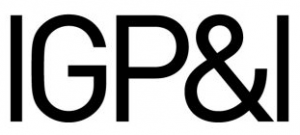MARPOL permits unprocessed food waste to be discharged into the sea from vessels proceeding at a distance not less than 12 nautical miles from the nearest land. Sounds straightforward? Unfortunately, it is not - all coastal states do not define their ‘nearest land boundary’ in the same way.

MARPOL compliance and distances ‘from the nearest land’
Published 27 September 2022
According to Gard’s Chinese correspondent Huatai Marine, vessels trading to China are regularly fined for non-compliance with garbage discharge provisions in Chinese waters, most often for illegal dumping of food wastes. In its circular PNI[2022]08, the correspondent explains that the Chinese requirements for discharges of food wastes are generally no stricter than those set forth in MARPOL Annex V. The main reason for being penalised is merely that vessels’ garbage procedures, and nautical charts, are not sufficiently clear on the coordinates of Chinese sea areas in which the discharge of food wastes is prohibited.
Some time ago, a Gard Member’s vessel was detained in Ningbo Port for illegally discharging food waste into Chinese waters. The vessel’s log book showed that it had been approaching Ningbo Port at the time of the alleged incident and the crew had taken all necessary precautions to ensure that the vessel was at least 12 nm from the Chinese shore before discharging any food waste.
However, we have also received reports of vessels being penalised in Australia for the same reasons, that is, for illegally discharging food waste into Australian waters. In one case, the alleged incident took place when the vessel was proceeding at 13 nautical miles (nm) from shore, or more precisely, from an island off the north-east coast of mainland Australia.
In both these cases, the vessel was positioned more than 12 nm from the respective country’s shoreline when discharging its food wastes. So why were the two vessels penalised?
MARPOL Annex V at a glance
The MARPOL Convention prohibits discharge into the sea of nearly all forms of garbage, including plastic. It does, however, contain a specific exemption for food waste. Under MARPOL Annex V, discharge into the sea of food waste is permitted while the vessel is en route and as far as practicable from the nearest land, but in any case, not less than 3 nm from the nearest land if the discharged food waste has been comminuted or ground, and not less than 12 nm for unprocessed food waste. A simplified overview of all MARPOL Annex V discharge provisions can downloaded from IMO’s Website.
Stricter discharge standards do apply in the so-called ‘Special Areas’, however, neither China nor Australia have designated any Special Areas for the purposes of MARPOL Annex V.
Nearest land under MARPOL
When discharge standards under MARPOL require you to be a specified distance from the nearest land, the term ‘from nearest land’ generally means from a country’s territorial sea baseline. There is, however, one exception to this general definition. On the north eastern coast of Australia, Australia’s nearest land boundary extends around the outer edge of the Great Barrier Reef (GBR) region and discharges permitted under MARPOL must be measured seaward of this boundary. The IMO has designated the GBR region as a particularly sensitive sea area (PSSA) and additional protection measures, such as ship routeing systems and restricted discharges, therefore apply to vessels that transit the region. The Australian Maritime Safety Authority’s (AMSA) website “Navigation through the Great Barrier Reef and Torres Strait” contains an overview of all key requirements.
It is also a fact that not all countries define their baselines in the same way. For many countries, the baseline for establishing the territorial sea is drawn at the low-water line, as stated in official charts. Perhaps the easiest way to think of a normal baseline is as an “outline” of a country’s coast. However, a number of countries have established baselines as straight lines between prominent coastal features and others claim “archipelagic status” with baselines joining outlying islands. Such countries’ baselines can therefore lie many nautical miles off their coasts.
So - getting back to why the two vessels were penalised for illegally discharging food waste into the sea:
In the Chinese case, the crew was not aware that China has declared straight baselines along parts of its coast. In accordance with China’s Declaration of 15 May 1996, the baseline off Ningbo Port is drawn between points situated on two fairly remote islands and basically pushes the territorial sea limit further seaward. Hence, the crew had discharged food waste at a position well beyond the 12 nm limit as measured from China’s shoreline but failed to recognise that the vessel was still operating within Chinese waters. A visual map of China’s declared baselines is available here. As highlighted by our correspondent, note that partly enclosed sea areas, such as the Bohai Sea, are generally considered Chinese inland waters.
In the Australian case, the crew had discharged food waste at a position well beyond the 12 nm limit measured from Australia’s territorial baseline but failed to recognise that the vessel was operating within the GBR region. The exact coordinates for the GBR region is included in MARPOL’s definition of ‘nearest land’ and a visual map can be downloaded from AMSA’s website.
In both cases the crews had acted in good faith at all times and there was no attempt to deliberately circumvent the requirements of MARPOL.
Considerations and recommendations
In the two cases described above, discharges were related to MARPOL Annex V and garbage. However, other discharges from vessels controlled by the MARPOL Convention also have a minimum distance from the nearest land requirement that must be met.
Masters must make sure that environmental issues are considered in voyage and passage planning. Areas where specific marine environmental measures apply should be noted in the detailed passage plan. IMO’s circular MEPC.1/Circ.778/Rev.3 provides an overview of all Special Areas defined under MARPOL Annexes I, II and V and Emission Control Areas (ECAs) defined under MARPOL Annex VI. The circular also lists all IMO designated PSSAs and their associated protective measures.
Operators must ensure that vessel procedures, such as the Garbage Management Plan and Record Book, and nautical charts, contain all relevant information and are up to date. According to AMSA, vessels that do not carry adequate and up-to-date nautical charts may be detained and refers to this media release as an example of such a detention. Relying on unofficial charts demonstrates inadequate voyage planning under a vessel's safety management system. It may also indicate that a vessel may be in an unfit state for the voyage or poses a threat to the environment.
Vessel crews must be reminded that ’nearest land’ in MARPOL does not necessarily mean the ‘nearest shoreline’. In Australia, the nearest land boundary extends around the outer edge of the GBR region. Other countries have established baselines which lie off their coasts and it is from these baselines that the minimum distance requirements apply.
Consult your local agents if there is any doubt surrounding the baselines and any designated areas adopted locally. And remember, while discharge of food waste may be permitted, the food must not be contained in a plastic garbage bag since plastic cannot be discharged into the sea under any circumstances.



